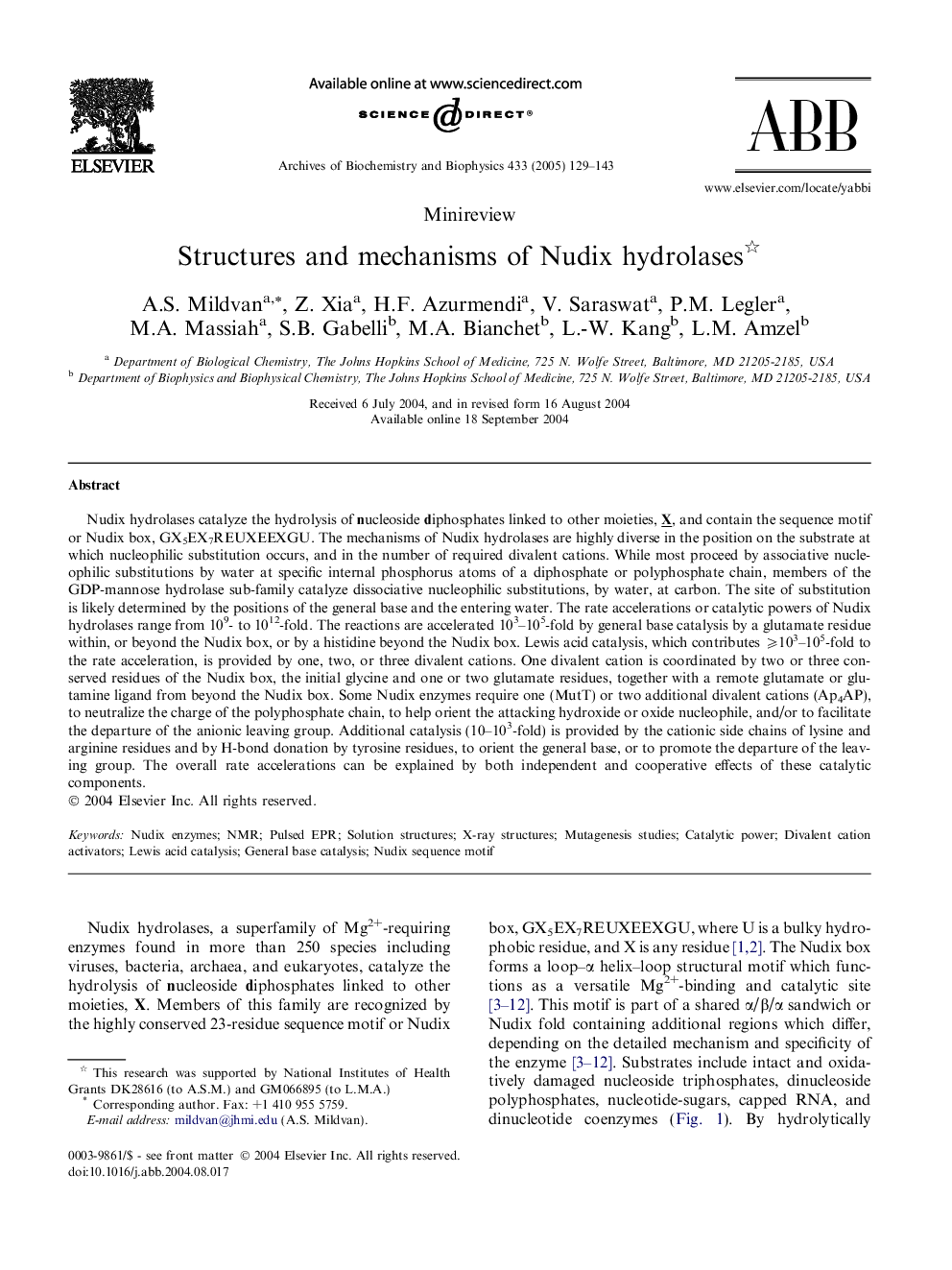| کد مقاله | کد نشریه | سال انتشار | مقاله انگلیسی | نسخه تمام متن |
|---|---|---|---|---|
| 9882412 | 1536557 | 2005 | 15 صفحه PDF | دانلود رایگان |
عنوان انگلیسی مقاله ISI
Structures and mechanisms of Nudix hydrolases
دانلود مقاله + سفارش ترجمه
دانلود مقاله ISI انگلیسی
رایگان برای ایرانیان
کلمات کلیدی
موضوعات مرتبط
علوم زیستی و بیوفناوری
بیوشیمی، ژنتیک و زیست شناسی مولکولی
زیست شیمی
پیش نمایش صفحه اول مقاله

چکیده انگلیسی
Nudix hydrolases catalyze the hydrolysis of nucleoside diphosphates linked to other moieties, X, and contain the sequence motif or Nudix box, GX5EX7REUXEEXGU. The mechanisms of Nudix hydrolases are highly diverse in the position on the substrate at which nucleophilic substitution occurs, and in the number of required divalent cations. While most proceed by associative nucleophilic substitutions by water at specific internal phosphorus atoms of a diphosphate or polyphosphate chain, members of the GDP-mannose hydrolase sub-family catalyze dissociative nucleophilic substitutions, by water, at carbon. The site of substitution is likely determined by the positions of the general base and the entering water. The rate accelerations or catalytic powers of Nudix hydrolases range from 109- to 1012-fold. The reactions are accelerated 103-105-fold by general base catalysis by a glutamate residue within, or beyond the Nudix box, or by a histidine beyond the Nudix box. Lewis acid catalysis, which contributes ⩾103-105-fold to the rate acceleration, is provided by one, two, or three divalent cations. One divalent cation is coordinated by two or three conserved residues of the Nudix box, the initial glycine and one or two glutamate residues, together with a remote glutamate or glutamine ligand from beyond the Nudix box. Some Nudix enzymes require one (MutT) or two additional divalent cations (Ap4AP), to neutralize the charge of the polyphosphate chain, to help orient the attacking hydroxide or oxide nucleophile, and/or to facilitate the departure of the anionic leaving group. Additional catalysis (10-103-fold) is provided by the cationic side chains of lysine and arginine residues and by H-bond donation by tyrosine residues, to orient the general base, or to promote the departure of the leaving group. The overall rate accelerations can be explained by both independent and cooperative effects of these catalytic components.
ناشر
Database: Elsevier - ScienceDirect (ساینس دایرکت)
Journal: Archives of Biochemistry and Biophysics - Volume 433, Issue 1, 1 January 2005, Pages 129-143
Journal: Archives of Biochemistry and Biophysics - Volume 433, Issue 1, 1 January 2005, Pages 129-143
نویسندگان
A.S. Mildvan, Z. Xia, H.F. Azurmendi, V. Saraswat, P.M. Legler, M.A. Massiah, S.B. Gabelli, M.A. Bianchet, L.-W. Kang, L.M. Amzel,